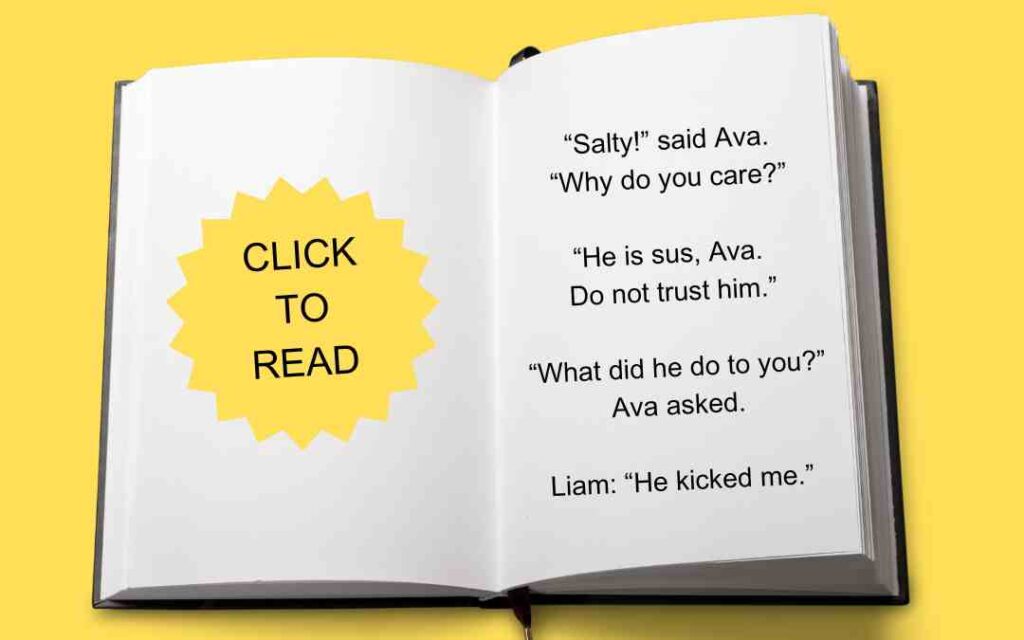
Free Hi/Lo Beginning/Emerging Reader Story for High School and Adult ESOL Students
The disastrous focus on “whole language” or “balanced literacy” reading strategies in recent decades has made it nearly impossible for many students to learn to read.
This method was based on memorizing and sight-reading large numbers of words. Schools bought expensive materials to teach a reading method that does not work. And it turns out the publishers pushing this method knew it was a scam all along. Worse, this discredited teaching method was particularly damaging to minority students.
As schools return to common sense phonics methods of sounding out words to learn to read, we should also rethink the reading materials we use for beginning readers, especially adults. Many of the materials in use are no better than Dick and Jane readers.
School News Today has done a review of beginning reader texts for adults and found them to be unbearably stupid and condescending. There are great inclusive high-interest/low-level texts for primary and middle schoolers but few reading resources for high school and adult beginning readers or new English Language Learners (ESL or ELL).
When you are 18 you don’t want to read sunshiny books about bears and rockets. Educators, such as in this video, note that babyish materials are alienating to older students. High school students and adults who are learning to read, or read English, for the first time deserve better reading materials.
We propose a reading curriculum that uses everyday language including easy-to-sound-out slang. In the whole language model, it might not make sense for students to memorize slang because slang changes so fast. But with the return to phonics, it is easy to include slang in readers.
Any word that can be sounded out can be included in a lesson. Using simple words that students see regularly like “sus” and “lit” makes texts more approachable. It does not matter if that slang changes next year, the student still benefits from sounding out words.
Using Gen Z slang is more inclusive than so-called “standard” English. Most American slang originated in black or LGBQT culture and history, and it is time we center it in the curriculum.
“The belief that there is a homogenous, standard, one-size- fits-all language is a myth that normalizes white ways of speaking English and is used to justify linguistic discrimination on the basis of race” argues April Baker-Bell, associate professor of language, literacy and English education, Michigan State University. It is a continuation of the punitive “linguistic isolation,” used by white enslavers to keep enslaved people from communicating with each other and to prevent them from learning to read English.
No one wants to sound like Ebenezer Scrooge anymore. Children of color already make up the majority of students in many states, and black culture is what youth aspire to. Old white culture is not dominant among students and should not be the heart of the school curriculum.
Better Beginning Reader Texts
Public School Zero is introducing readers for high school students that include slang and are targeted to Gen Z.
Click here for our first text for the Public School Zero readers program, which you can also download as a free PDF to print out for students. It is called “The Kiss.” The booklet uses short, simple words to tell a relatable story and replaces Dick and Jane with some of the most popular baby names in the 2010s, Liam and Ava.
Instead of using a children’s book model, which can be off-putting for adults, our beginning reader stories are based on texting. We should take advantage of this short-form genre to engage students.
A spelling list and discussion questions are included at the end since that is common practice, but it’s best to let the students come up with the discussion points themselves. Boring classroom exercises are part of the War on Reading and are designed to disengage students intellectually so they become better sheep for their corporate overlords.
The book is free to distribute but resale is prohibited.
Read Below
Also Read: Why I Won’t Assign Annoated Reading


